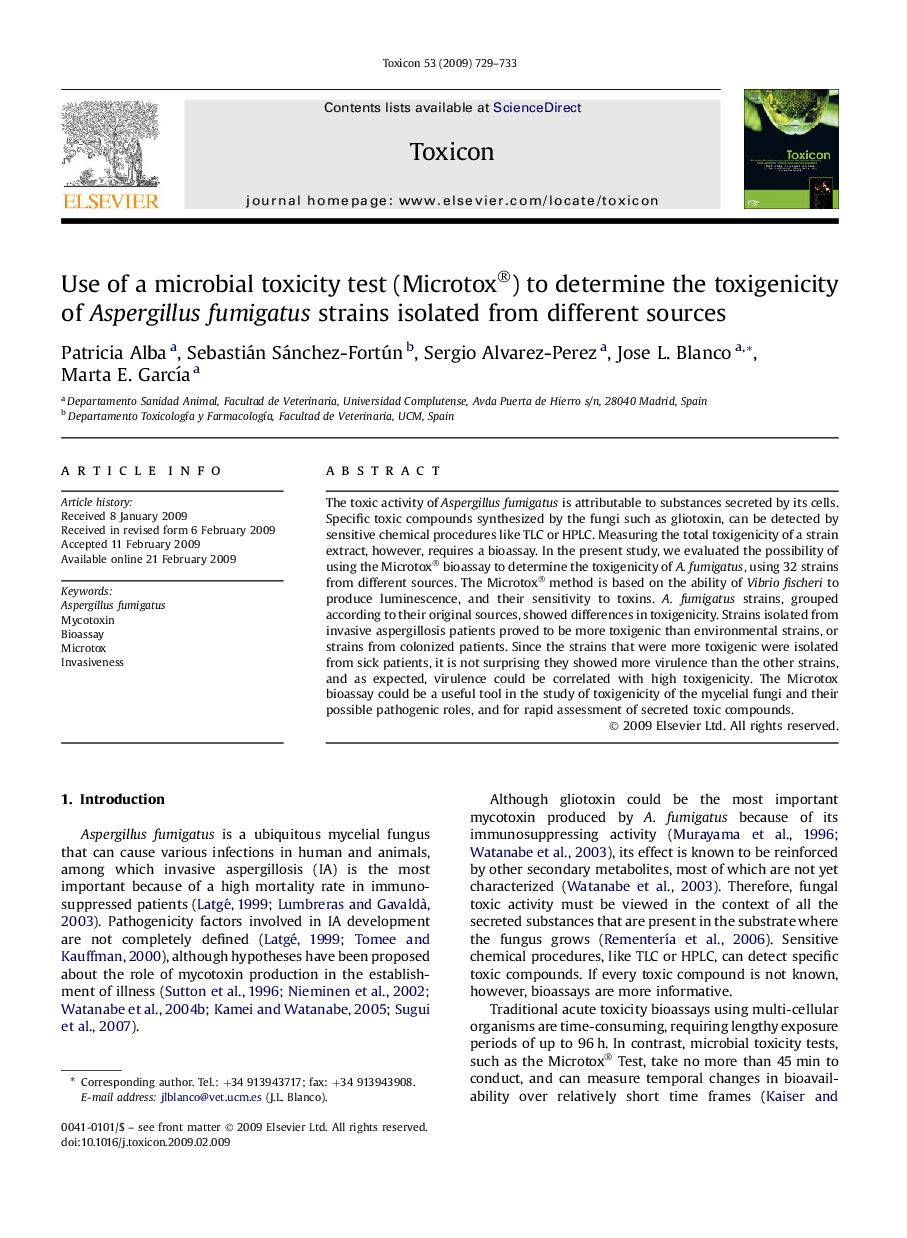| Article ID | Journal | Published Year | Pages | File Type |
|---|---|---|---|---|
| 2065268 | Toxicon | 2009 | 5 Pages |
The toxic activity of Aspergillus fumigatus is attributable to substances secreted by its cells. Specific toxic compounds synthesized by the fungi such as gliotoxin, can be detected by sensitive chemical procedures like TLC or HPLC. Measuring the total toxigenicity of a strain extract, however, requires a bioassay. In the present study, we evaluated the possibility of using the Microtox® bioassay to determine the toxigenicity of A. fumigatus, using 32 strains from different sources. The Microtox® method is based on the ability of Vibrio fischeri to produce luminescence, and their sensitivity to toxins. A. fumigatus strains, grouped according to their original sources, showed differences in toxigenicity. Strains isolated from invasive aspergillosis patients proved to be more toxigenic than environmental strains, or strains from colonized patients. Since the strains that were more toxigenic were isolated from sick patients, it is not surprising they showed more virulence than the other strains, and as expected, virulence could be correlated with high toxigenicity. The Microtox bioassay could be a useful tool in the study of toxigenicity of the mycelial fungi and their possible pathogenic roles, and for rapid assessment of secreted toxic compounds.
